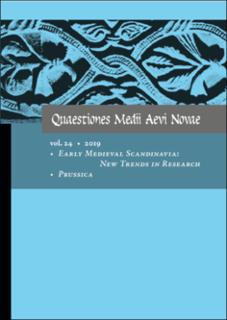| dc.contributor.author | Schnall, Jens Eike | |
| dc.date.accessioned | 2020-12-18T14:21:26Z | |
| dc.date.available | 2020-12-18T14:21:26Z | |
| dc.date.created | 2020-12-09T16:12:46Z | |
| dc.date.issued | 2020 | |
| dc.Published | Quaestiones Medii Aevi Novae. 2019, 24, 97-109. | en_US |
| dc.identifier.isbn | 978-83-65548-57-3 | |
| dc.identifier.issn | 1427-4418 | |
| dc.identifier.uri | https://hdl.handle.net/11250/2720237 | |
| dc.description.abstract | The article deals with uses of the past in art and architecture within networks and associations of the völkisch movement of the German Empire around 1900. It takes the völkisch painter Hermann Hendrich as an example and focuses specifically on halls which he had built for his paintings at Thale, Szklarska Poręba, Königswinter and Burg a.d. Wupper, conceptualized as total art works. The article traces the ideological and aesthetic contexts of these halls which were different in style, but all addressing distant pasts through holistic programs involving architecture, figural decorations, paintings, and the natural surroundings. The article shows how they were meant to function at their sites, deliberately chosen places of remembrance – in the case of the Walpurgishalle as part of an ensemble shaping the most important place of neo-pagan worship in Germany. | en_US |
| dc.language.iso | eng | en_US |
| dc.publisher | Societas Vistulana | en_US |
| dc.relation.uri | http://qman.com.pl/volumes/t-24-2019/ | |
| dc.title | Halls Haunted by the Past: Old Germanic Heritage and “Völkisch” Architecture in the German Empire | en_US |
| dc.type | Journal article | en_US |
| dc.type | Peer reviewed | en_US |
| dc.description.version | publishedVersion | en_US |
| dc.rights.holder | Copyright by Center of Historical Research Foundation, 2019. | en_US |
| cristin.ispublished | true | |
| cristin.fulltext | original | |
| cristin.qualitycode | 1 | |
| dc.identifier.cristin | 1858053 | |
| dc.source.journal | Quaestiones Medii Aevi Novae | en_US |
| dc.source.40 | 24 | en_US |
| dc.source.pagenumber | 97-109 | en_US |
